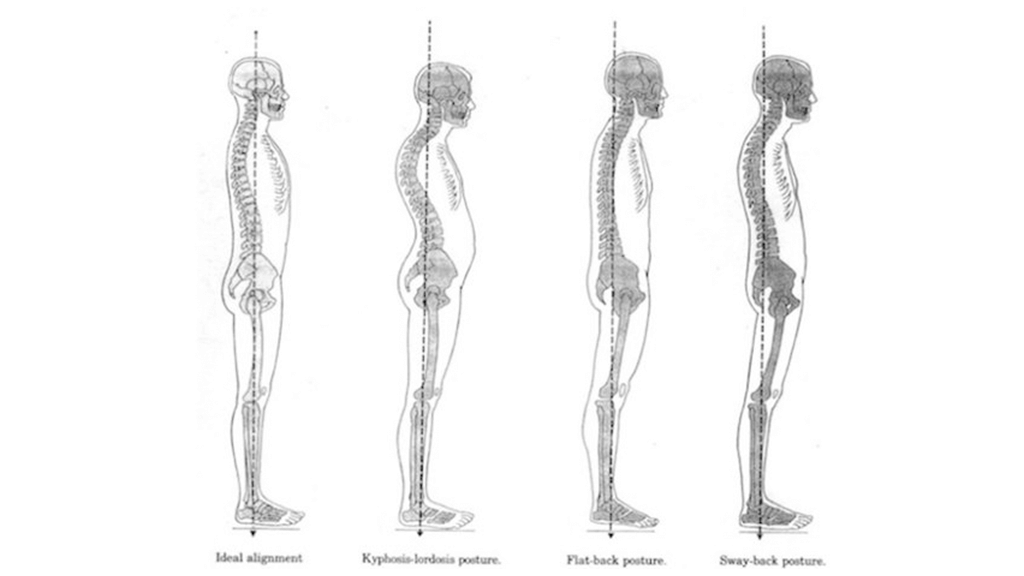
What happens when your body is out of alignment?
A key phrase you’ll often hear us using in the Pilates Connection studio is body alignment – so what does is mean, and why is it important?
In perfect body alignment, the ankles, pelvis, thorax and head are aligned vertically so that from a side view they form a straight line. This means that your bones, muscles, joints and ligaments are all working together for optimal performance. The closer your body is to perfect alignment, the less likely you are to suffer exercise injuries or develop musculoskeletal problems.
Why is being in alignment important?

Ideal body alignment
When any part of your body is out of alignment, other joints and muscles need to re-adjust to “fix” this problem and compensate for the imbalance. If these imbalances aren’t corrected, you are more likely to injure yourself, or suffer both niggling and chronic pain over time as the body will remain in a compromised state, resulting in more uneven wear and tear. Common complaints like knee pain, neck pain and back pain will generally occur when the body is out of alignment.
Think of body alignment like getting a wheel alignment on your car. As soon as your wheels are not balanced and properly aligned, the tyres start to wear unevenly causing the car to pull to one side instead of driving in a straight line. Brakes and fuel efficiency are also compromised as the car is not operating the way it was designed. Our bodies perform and react in the same way, so it’s important to identify any alignment issues in the body, and work on getting the body back into balance as quickly as possible.

Functional versus dysfunctional body alignment
How can we identify and correct body alignment issues?
If you’re reading this article, chances are you may already be a member of our Pilates studio. During each and every Pilates session, we look for imbalances, and via tailored exercises, work on getting your body into a more aligned state by the end of the class. However, for some people who may have spent a long time in a compromised state as a result of previous injury, or bad habits, a more rigorous hands-on approach may be required.
After much research, and training, we have found that KMI (Kinesis Myofascial Integration) structural body work is a wonderful complement to Pilates, offering our new and existing clients a more comprehensive and lasting method of getting the body back into alignment.The essence of structural body work is identifying and manipulating the fascia (which is the tissue webbing that gives you your unique shape). The fascia can restrict the job of the bones and muscles, so we work to loosen and reposition this connective tissue during a session.
You can read more about KMI therapy via our previous article HERE, and if you have time, the 12 minute video below from a structural body worker in Canada will give you an excellent outline of the therapy, and what to expect during a session.
If you’d like more information on KMI structural body work, please contact our certified practitioner, Liane on 0400 012 693. For a limited time, we are offering an introductory rate of $110 (usually $130) for an 80-90 minute session, for members and their family and friends.
Client Testimonials:
“Following constant and annoying pain in my neck and shoulders, I had a KMI structural bodywork “massage” with Liane. Liane is a very knowledgeable, dedicated and caring practitioner, and after one session I found I had loosened up considerably and my aches and pains resolved. I would recommend giving it a go in preference to taking painkillers.”
TG Lane Cove North – Feb 2017



Sorry, the comment form is closed at this time.